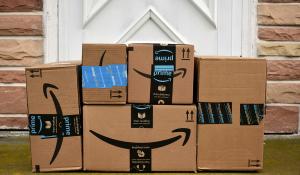
One of the most common questions we get about the Chocolate Scorecard is, “Why did my favorite chocolate company receive that score?” If you’ve been wondering that yourself, this primer should help!
When we first created the Chocolate Scorecard, ratings were given to companies based on their commitments to source certified cocoa and their progress as they worked towards having 100% certified cocoa in their supply chains.
While certifications are helpful tools for companies and consumers to use, on their own they cannot address the underlying causes of child labor, which include farmer poverty, lack of infrastructure and/or educational opportunities, and cultural/traditional understanding regarding child labor.
Furthermore, different certifications have different standards – and companies count all cocoa sourced from the different certifiers as ‘sustainable.’ Yet as time has gone on, we’ve learned the chocolate industry cannot certify itself into social and environmental sustainability. Despite an increase in volume of certified cocoa making it into chocolate supply chains, farmer income remains low and child labor remains endemic.
This is why, in addition to tracking a chocolate company’s certification commitments, the scorecard now looks at what companies are doing beyond certification. Knowing if a company has a plan to improve farmer livelihoods, engage with cocoa communities, promote sustainable agricultural practices, and yes, specifically address child labor, are just as important as knowing how much certified cocoa a company is sourcing.
The information on this page is based off publicly available information found on company websites and/or in sustainability reports. Some information that has been disclosed to us in private may be incorporated into the final grade as well. See below for brief snapshots into highlights of company programs as well as links to web pages/reports.
Mars
Program: Cocoa for Generations, as part of Sustainable in a Generation
Financial commitment: $1 billion over ten years
Sustainable cocoa goals: 100% responsibly sourced and traceable by 2025
Sustainable cocoa in supply chain: 47%
Certifications: Fairtrade, Rainforest Alliance
Most recent sustainability report: 2018
Scorecard grade: C+
Mars’ Cocoa for Generations is separated into present-day, immediate goals, such as having 100% responsibly sourced and traceable cocoa by 2025 and improving farmer income, as well as long term goals to improve farmer livelihoods. Mars will also enhance child labor monitoring and remediation (CLMRS) systems in its supply chain. A CLMRS works with local communities to identify underlying reasons for child labor and helps them address the problems, then monitors the progress.
In addition to Mars’ commitment, Mars launched its Farmer Income Lab, a “think-do tank” that is working to identify best practices to improve farmer income. The Farmer Income Lab works with academics, the private sector, civil society, and governments to tackle this challenge.
Mars has spoken out in favor of plans to increase farmgate prices of cocoa, as proposed by the Ghanaian and Ivorian governments.
Nestle
Program: Nestle Cocoa Plan
Financial commitment: 110 million CHF (just over 110 million USD) between 2010-2019
Sustainable cocoa goals: 230,000 tons of cocoa sourced by 2020 (est. 57% of anticipated supply)
Sustainable cocoa in supply chain: 42.9% - 186,358 tons of cocoa
Certifications: Fairtrade, UTZ
Most recent sustainability report: 2018
Scorecard grade: C+
In 2012, Nestle partnered with the International Cocoa Initiative (ICI) to launch the first cocoa-focused Child Labor Monitoring and Remediation System (CLMRS). Rather than punish farmers when incidents of child labor are discovered, the CLMRS works with local communities to identify underlying reasons for child labor and helps them address the problems, then monitors the progress. Remediation can affect a community or address the specific needs of a family. In addition to the CLMRS, Nestle hosts community training sessions about child labor to help communities identify child labor, differentiate between tasks that are appropriate for children and tasks that are dangerous, and shift attitudes about child labor.
In Nestle’s first report on its CLMRS efforts, it shares the reach of its program, challenges it has encountered, and next steps to continue rolling out the program. As of the publication of the report, over 40,000 5-17 year old children were being monitored by the Nestle Cocoa Plan CLMRS, and over 5,000 were helped.
Lindt
Program: Lindt & Sprungli Farming Program; Lindt Cocoa Foundation (NGO arm of Lindt)
Financial investment commitment: N/A
Sustainable cocoa goals: Fully traceable and verified by 2020
Sustainable cocoa in supply chain: 86%
Certifications: N/A – self-verifies supply chain
Most recent sustainability report: 2018
Scorecard grade: C
In addition to committing to sourcing more sustainable cocoa, Lindt has also committed to making sure its cocoa it can trace where its cocoa beans are grown. Lindt does not use any of the major certifications but rather self-verifies its supply chain. Increased transparency throughout the cocoa supply chain is needed to help provide long-term stability to farmers and ensure that measures are working. Lindt implemented its own CLMRS program in its supply chain. Its standards/process are slightly different than the CLMRS program that the International Cocoa Initiative is using. Through the Lindt Cocoa Foundation, Lindt’s non-profit, Lindt is also working on country-specific farmer trainings/ projects, creating a child labor risk indicator with ICI, and developing a living income benchmark for Ghana.
Mondelez
Program: Cocoa Life
Financial investment: $400 million, ten years
Sustainable cocoa goals: N/A
Sustainable cocoa in supply chain: 42% in 2018
Certifications: Cocoa Life (In-house certification scheme)
Most recent sustainability report: 2018
Scorecard grade: D
Cocoa Life is Mondelez’s in-house certification scheme. It is verified by FLOCERT, the certification/standard setting arm of Fairtrade. This means that FLOCERT confirms the information is accurate, but FLOCERT and Fairtrade do not have a say in what standards Cocoa Life uses. Unlike Fairtrade, Cocoa Life does not guarantee farmers a minimum price. Premiums are awarded to farmers if they work with selected NGOs to develop plans, which removes some farmer autonomy. Furthermore, Cocoa Life standards were not written in consultation with farmers, and there is not a lot of transparency about what Cocoa Life standards are, although Mondelez and Fairtrade have said that farmers will “receive a competitive price for the cocoa” which will be “at least equivalent to [the value] previously delivered under Fairtrade.” Cocoa Life provides farmer training on agricultural practices and sensitizes farming communities to child labor.
In 2017, Mondelez began to implement CLMRS into cocoa communities, in partnership with the International Cocoa Initiative. We look forward to learning more about Mondelez’s CLMRS efforts in subsequent reports.
Hershey
Program: Cocoa for Good
Financial investment: $500 million through 2030 (12 years)
Sustainable cocoa goals: 80% was sustainable and certified in 2018
Sustainable cocoa in supply chain: 100% by 2020
Certifications: Fair Trade USA, Rainforest Alliance, UTZ
Most recent sustainability report: 2018
Scorecard grade: C
In 2018, Hershey launched Cocoa for Good, its new initiative. Public details about this program are still scant, and details are filled in from Hershey’s 2017 sustainability report. Under the Eliminating Child Labor portion of Hershey’s sustainability report, Hershey notes that “Hershey’s certification programs use independent authorities to verify our use of certified and sustainable cocoa in our products,” meaning that it still relies heavily on certification schemes to address child labor.
The program relies strongly on Learn to Grow program, whose goal is to improve quality and yields of cocoa. The industry theory behind improving cocoa yields is that if cocoa farmers can grow more cocoa, they can sell more cocoa and improve their income. While this sounds good on paper, this strategy has not been as effective in improving farmer livelihood in practice, especially coupled with low cocoa prices and an oversupply of cocoa. Hershey has also begun trainings for farmers. Hershey has stated that it will begin implementing CLMRS programs, and we look forward to seeing the results of its efforts.
Ferrero
Program: N/A
Financial investment: N/A
Sustainable cocoa goals: 100% certified as sustainable by 2020
Sustainable cocoa in supply chain: 75%, FY 2017/2018
Certifications: Fairtrade, Rainforest Alliance, Utz
Most recent sustainability report: 2017
Scorecard grade: D
Ferrero’s sustainability initiatives are centered on CocoaAction, an industry initiative that most of the other companies on the scorecard are also a member of. Ferrero worked with ICI to introduce CLMRS programs to 11 co-ops/farmer organizations. In addition to the industry initiative, Ferrero’s efforts to combat child labor NGO partnerships to monitor ECOOKIM, one of the union cooperatives that Ferrero sources from in Cote d’Ivoire, and leading trainings in communities on child labor sensitization and identification.
Godiva
Program: N/A
Financial investment: N/A
Sustainable cocoa goals: 100% sustainable cocoa by 2020
Sustainable cocoa in supply chain: N/A
Certifications: N/A
Most recent sustainability report: N/A
Scorecard grade: F
Godiva has stated on its website that it has a goal of sourcing 100% sustainable cocoa by 2020. It has not indicated which certifications it is sourcing from, what progress it is making with this goal, or what additional steps it is taking to address child labor and farmer income. While its competitors publish annual reports on their progress, Godiva only reports minimal information on its website.
--
Last updated July 2019






